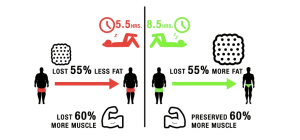The importance of maintaining strong and healthy muscles cannot be overstated. While many people focus on the muscles in their arms, legs, and core, one group of muscles often gets overlooked: the glutes. Yes, those muscles you sit on all day are crucial for your overall health and well-being.
Your glute muscles, comprised of the gluteus maximus, gluteus medius, and gluteus minimus, play a fundamental role in the stability, mobility, and functionality of your entire body. They are the largest and strongest muscles. These three muscles work together to abduct, rotate, and extend the hip. Without your glutes, you simply would not be able to stand up, walk, run, jump, or even sit.
The glutes are designed to be powerful and strong. They join the upper body to the lower body creating a postural chain and controlling everything from the hamstrings, hips, and back. Strengthening your glutes can help improve posture, as well as make sitting down, standing, picking up heavy objects, and climbing stairs easier. Developing strong glutes can also improve athletic performance and decrease your risk for injuries. Here’s why they’re so important:
Common causes of inactive or poorly functioning glute muscles
1. Sitting: When we sit for long periods, the muscles in our lower bodies simply switch off and become inactive. At the same time, we also adopt terrible postural positions that push our spine and connective tissues out of shape. The result is compromised body function, inactive muscles, and overly strained ligaments and tendons.
2. Lower body injury: The glutes are very clever muscles. So clever, that they know how powerful they are. When we experience any type of lower-body injury, whether it’s a broken leg or a sprained ankle, the glutes automatically switch off to try and slow you down. This allows your lower-body injury to heal. The only problem is our glutes do not automatically switch back on.
The Benefits of Strong Glutes
1. Postural Support: Strong glute muscles help maintain proper posture by stabilizing the pelvis and supporting the spine. Weak glutes can lead to imbalances, which may result in lower back pain, hip pain, and even issues with the knees and ankles.
2. Improved Athletic Performance: Whether you’re an athlete or someone who enjoys staying active, having strong glutes can enhance your performance in various activities. From running and jumping to lifting and bending, these muscles are involved in almost every movement you make. They are responsible for accelerating, decelerating, changing directions, and creating explosive power in jumps. They are also responsible for effective hip extension. Sprinting is one of the most effective exercises for simulating the glutes, activating 234% more of the gluteus maximus muscle than a vertical jump. Athletes with strong glutes will be faster, more efficient, and more explosive in their movements than athletes with weaker glutes.
3. Injury Prevention: Weak glutes can contribute to a variety of injuries, including strains, sprains, and even more severe issues like sciatica. By strengthening these muscles, you can help prevent injuries and ensure that your body moves efficiently and safely. Strengthening your glutes decreases your risk for back injuries in exercises such as the deadlift and squat by taking some of the pressure off your lower back. Furthermore, weak glutes may contribute to pulled muscles in your hamstring or groin, or cause an imbalance in the hip.
4. Better Movement Mechanics: The glutes work in conjunction with other muscles in the body to provide stability and power during movement. By strengthening your glutes, you can improve your movement mechanics, reducing the risk of compensatory patterns that can lead to overuse injuries.
Strengthen your glutes
So, how can you ensure that your glutes are strong and healthy? Train your glute muscles at least once a week. Incorporating targeted exercises into your routine is key. Movements like squats, lunges, hip thrusts, and glute bridges can help activate and strengthen the glute muscles. Additionally, include aerobic exercise in your weekly routine. Perform at least 30 minutes of moderate-intensity exercises five days a week. Paying attention to your posture throughout the day can make a big difference. Avoiding excessive sitting and incorporating regular breaks to stand, stretch, and move can help prevent gluteal weakness and associated issues.
In conclusion, don’t underestimate the importance of your glute muscles. By prioritizing their strength and health, you can support your overall well-being and enjoy a more active and pain-free lifestyle. Your chiropractor can provide personalized guidance and support to help you achieve optimal gluteal health.
Chiro & Sports Med
Our chiropractors at Chiro & Sports Med are committed to providing chiropractic solutions to address your unique needs, whether you are experiencing an irritated nerve, bulging disc, back pain, neck pain, knee pain, headaches, or even muscular tightness and tension. You may be searching for pain relief after an accident or experiencing an injury. Our mission is to help reduce or eliminate pain and to prevent future problems and injuries. Above all, we are here to improve your quality of life, well-being, and your ability to live an active healthy lifestyle.
If you would like to make an appointment with one of the chiropractors at Chiro & Sports Med call our office on 9817 2005 and one of our friendly staff will organise an appointment for you or Book Online.





